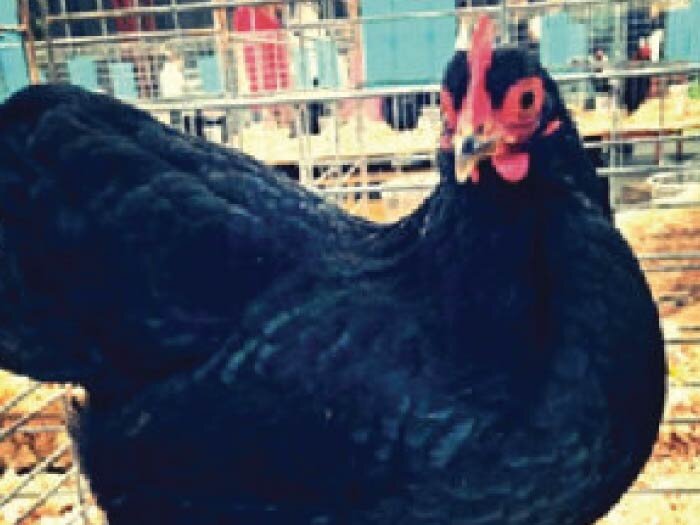BY: Julia Barnes
Attending your first poultry show can be stressful and overwhelming, even more so if you don’t know what to expect. Hopefully this post will help you be better prepared and to know what to expect. This is “part 2” that goes along with my last post, Showing Poultry: Part 1 Conditioning Poultry for Show. I hope this post helps those who are new to the poultry show world, but remember there are many methods this is only the method that I use.
The night before the show I look at the poultry show schedule to see what time the show building opens for “coop-in” and what time judging starts. I like to get my birds in their show cages about an hour before judging begins so they have time to settle in and so I have time to do some fine tuning.
- Health Check: At the show, there may or may not be a health check to go through to check for sick birds and parasites. Parasite and disease prevention as I mentioned in my previous post not only keeps your birds healthy, but makes going through a health check stress and hassle free. After the health check I find my bird’s cage.
- Cages: The cages are sorted first by specie like waterfowl, turkey, or chicken. Then by class: for example Light Duck, American, or Feather Legged. Then next by breed: for example Cayuga, Brahma, or Silkie. Lastly by variety (color): for example Barred, Buff, White, or Silver Duckwing. Additionally, each cage has a cage card that say whose bird goes in that cage. The card will indicate the breed, sex/age, leg band number, and variety of the bird meant for the cage. Carefully look at the exhibitor number on the card before putting your bird in the cage, there are usually other people with the same breed and variety you have. Each cage usually already has clean wood shavings so no need to bring your own.
- Feed/Water: All of the shows I’ve attended provide food and water and food/water cups for the exhibitors. Once my birds are in their correct cages I immediately fill their water cup. I don’t, however, offer them any feed them right away. Feeding them a lot before judging causes the crop to fill with feed giving the bird a lump on its chest making the bird appear misshapen and unbalanced. If they are acting very hungry, I will give them a couple pinches of feed, but no more until after judging is finished. I usually don’t, but some people like to bring their own food and water if their birds are finicky about changes.
- Fine-tuning: After all the birds are watered and settled in their cages I can do some last minute things to make my birds really stand out and look their best before the judge comes around. For chickens, I lightly rub baby oil on the comb, wattles, earlobes, beak, and shanks (legs). For ducks I rub baby oil on their bills, legs, and feet. This brings out their natural colors and makes the skin/scales look extra healthy. Good transportation should minimize the amount of manure/dirt that gets back on the chicken on the way to the show, but to be sure I make sure there is no manure or shavings stuck on the bird’s feet or vent areas. I also wipe each bird down with a cloth slightly dampened with rubbing alcohol to get dust of and make the feathers really shine.
Orders
Services
About
Your Wilco Store
Store Hours
Monday to Saturday:
8 a.m. to 8 p.m.
Sunday: 9 a.m. to 6 p.m.
Need Help?
For questions or help with online orders call: (888) 78-WILCO
Limited to stock on hand. Some items may vary from photos. Because of store size limitations or geography, some items featured may not be available in all stores but will be made available by special order during sale periods at advertised prices. All sale prices listed as “dollars off” or “% off” are discounted from our regular posted shelf price, not from discounts given with specialty, bulk or pallet pricing. Reseller and Drop-shippers must contact us for pre-approval to place orders with the intent to re-distribute.
© 2025, Wilco Farm Store
